Link zur deutschen Version: fib PhD Symposium Budapest 2024 – Ein Erlebnisbericht
At the end of August, I participated in the fib PhD Symposium. The fib (Fédération internationale du béton or The International Federation for Structural Concrete) organised this conference for the 15th time. Only PhD and doctoral students who deal with concrete in the broader sense presented their work at this conference. (However, there are conferences organised by the fib and other associations aimed at practitioners and researchers). The more than 150 presentations were divided into five parallel sessions, meaning that throughout the three days of the conference, there were always five presentation sessions running simultaneously. The variety of topics is illustrated by the titles of the individual sessions:
- Structural analysis, modelling and design
- Assessment and structural health monitoring
- Innovations in metallic and non-metallic reinforcement
- Durability of existing concrete structures and durability for future structures
- Innovations in concrete and concrete technology
- Bridges, reservoirs, dams, tunnels and road constructions
- Sustainability of materials and structural systems, including heritage concrete structures
- Life cycle assessment and design, rest life
- Composites for strengthening concrete structures
- Maintenance, retrofitting or strengthening of concrete structures
- Digitalisation – 3D concrete printing
- Buildings and shells
- Structural reliability and risk analysis
Participants from 72 universities across all continents were represented, with the majority coming from Europe.
In the first part of my blog post, I will share four presentations/ideas that I found interesting (and did not come from our research group). In the second part, I will report on the social aspects of the conference, which, in my opinion, are just as valuable as the technical inputs.
Part 1 – Interesting presentations
Conferences are not only there to disseminate your work but also to get inspired by the work of others and to honour their work. In that spirit, the following presentations have left a lasting impression on me:
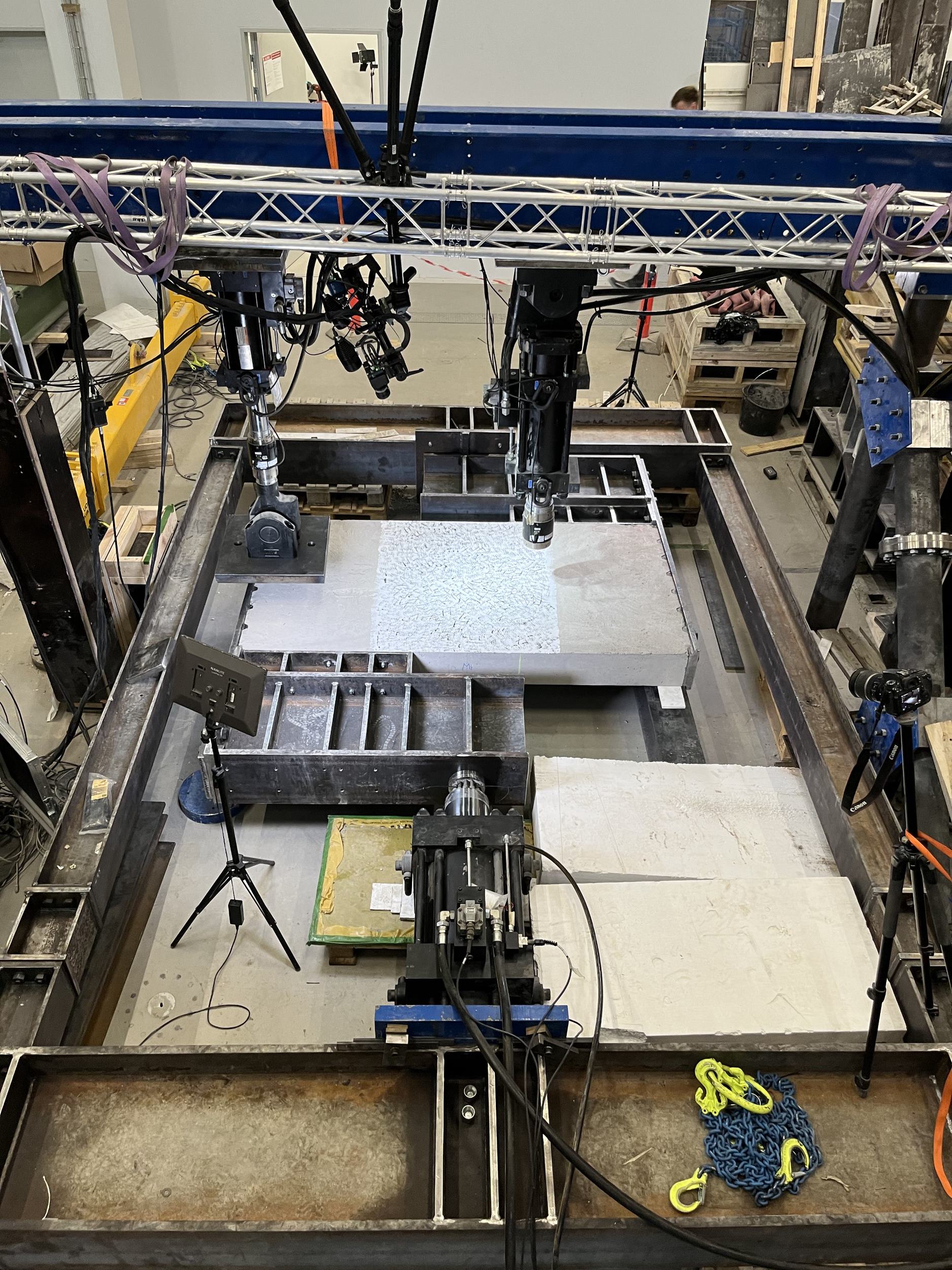
Jens Skovgaard Larsen (Univerity of Southern Denmark / COWI [Industrial PhD Student]; co-authors: Henrik Brøner Jørgensen and Søren Gustenhoff Hansen) has in his first year as a PhD student already conducted several large-scale tests on a test setup he developed himself (see Figure 1). These tests investigate the interaction of in-plane and out-of-plane shear in reinforced concrete slabs without shear reinforcement. He also plans to experimentally examine how moments affect the interaction of in-plane and out-of-plane shear.
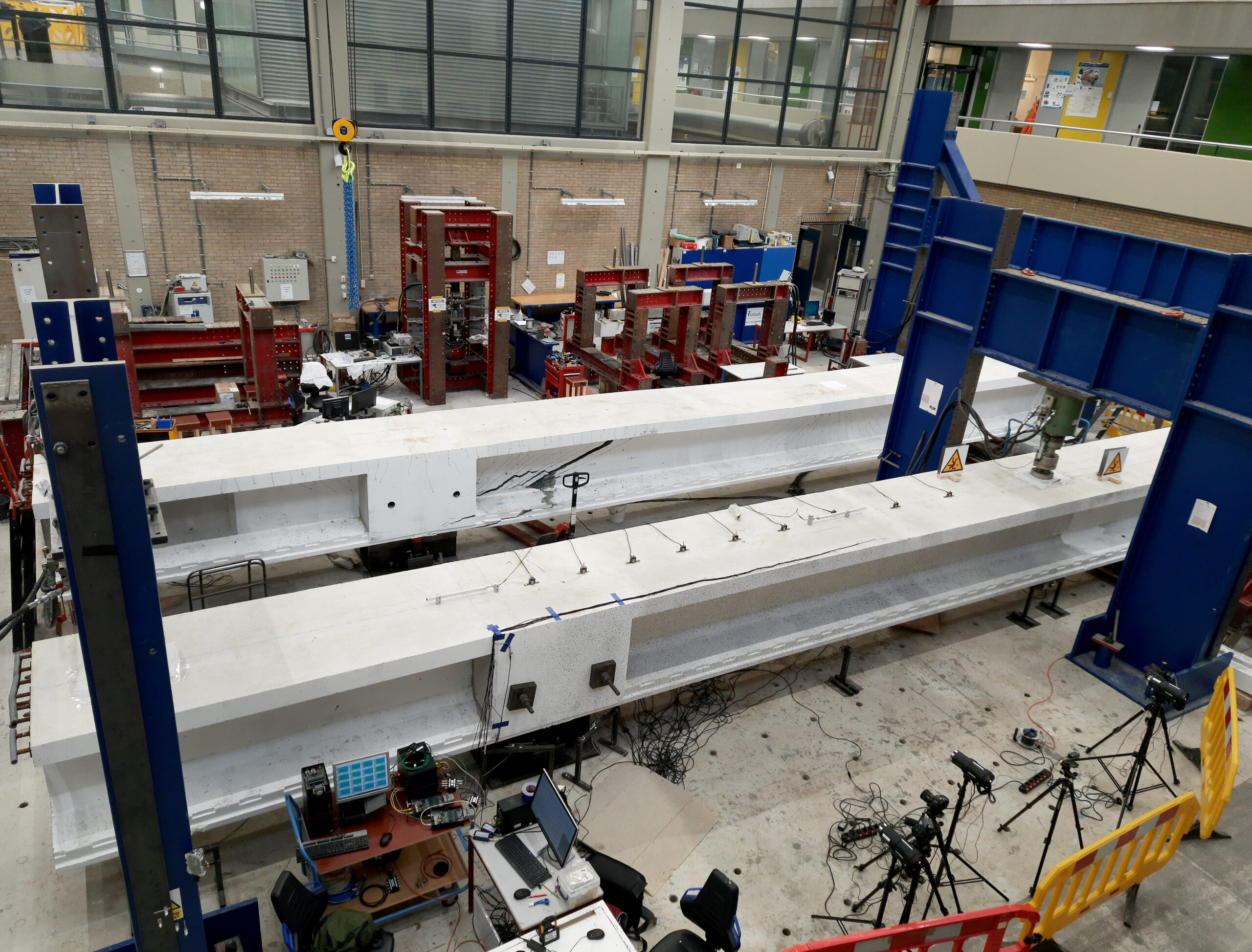
Mohammed Sirage Ibrahim (TU Delft; co-authors: Mauro Poliotti, Yuguang Yang und Max Hendriks) has tested over twenty 15m long prestressed concrete girders for shear (see Figure 2). This project is based on the fact that many existing bridges in the Netherlands consist of prefabricated prestressed single-span girders that have been made continuous girders. Among other things, questions arise regarding the shear behaviour of these girders. I also find the blind-prediction contest that was carried out on this project very interesting. Emilia Andrade Borges (TU Delft) will continue the project and conduct further tests.
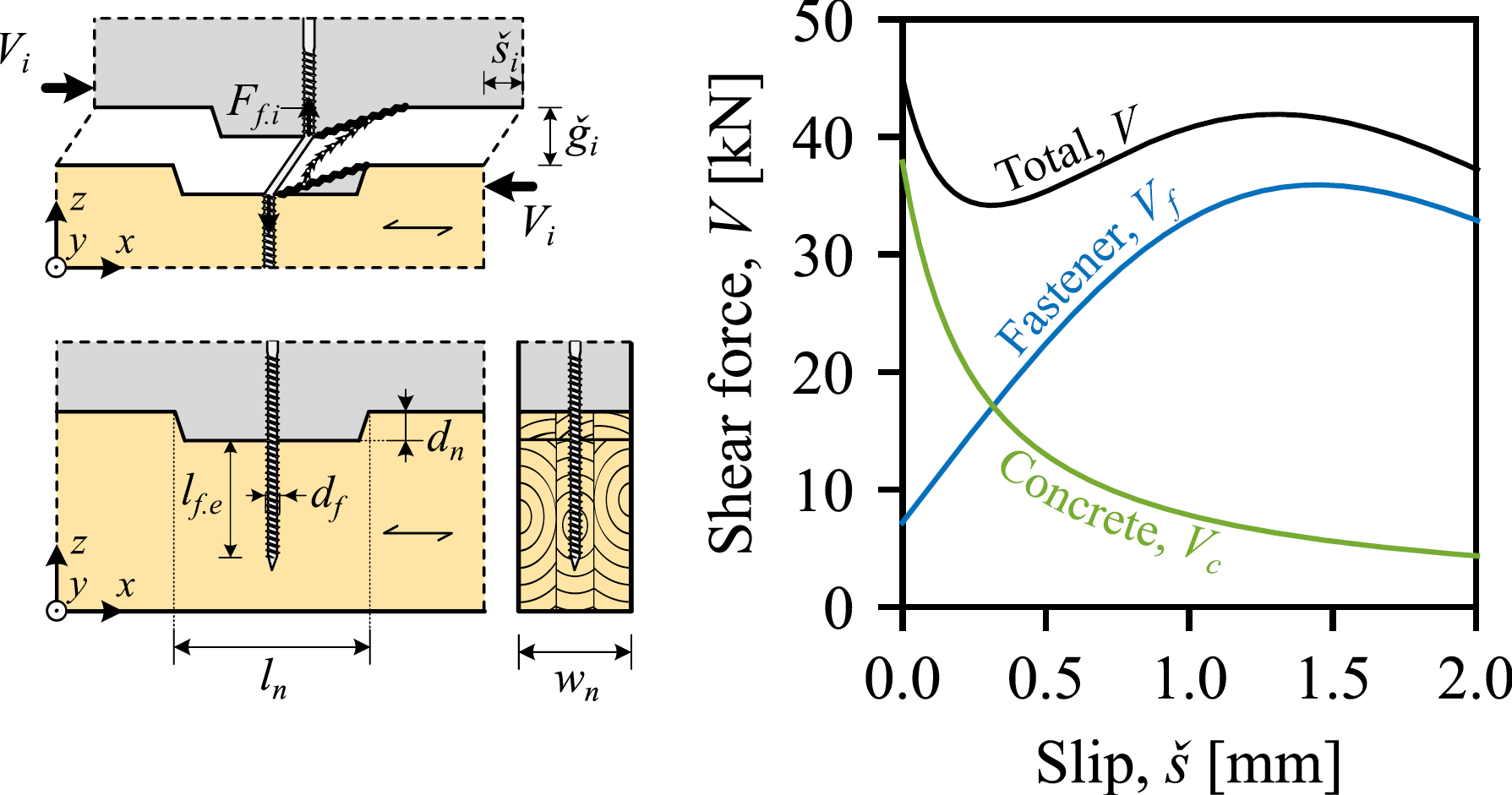
Peter Kolt Rasmussen (Technical University of Denmark/Ramboll [Industrial PhD Student]; co-authors: Linh Cao Hoang, Jesper Harrild Sørensen, and Bent Feddersen) presented a mechanically consistent model that represents a local concrete failure in timber-concrete composite (TCC) floors with notched connections. Based on the progressing deformation state of failure, the model accounts for the gradual softening of the effective concrete strength as well as the increasing activation of the fastener (see Figure 3). The approach can be used to design the fastener so that the notch is guaranteed to fail in a ductile manner, eliminating previous design restrictions and enabling the use of lower-strength (and lower-cement) concrete.
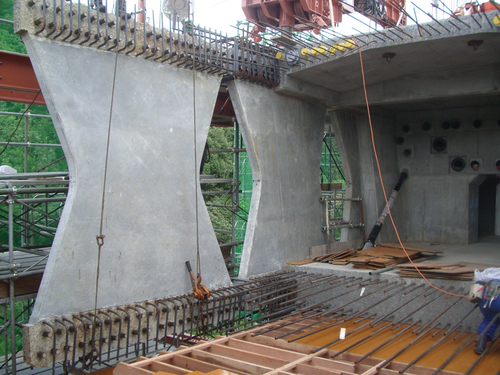
Dr. Akio Kasuga (The University of Tokyo / Sumitomo Mitsui Construction; keynote speaker) gave an impressive presentation on various projects with ultra-high performance concrete that he has been involved in as an engineer over the last 30 years. He had already realised small bridges with prestressed, non-metallic reinforcement (aramid) around 1990 – genuine pioneering work. I was furthermore impressed by the development of ‘butterfly webs’ with high-strength concrete and prestressed non-metallic reinforcement (see Figure 4). The first motorway bridge out of non-metallic reinforcement with these webs was completed in 2020.
I will certainly continue to follow these projects and look forward to the results and articles from them. My selection is not representative but only reflects my preferences. There were many other exciting projects at the conference.
Part 2 – Social aspects
Apart from the technical aspects, I will remember the following aspects from the conference in Budapest:
The discussions after the presentations were mainly very constructive and pleasant. I appreciated that. You could tell that the audience understood, for example, what it means to perform large-scale experiments. Accordingly, the inputs were always benevolent. During the breaks, it was easy to converse with other participants. It felt a bit like the very first week of university.
I got to know very friendly and excellent researchers with whom I will stay in contact. The discussions usually started with the research topic, then moved on to more general issues, such as employment conditions at universities or the working culture in the construction industry in different countries, and ended with private topics. I appreciated the exchange immensely.
Finally, I want to mention that I enjoyed spending this week in Budapest with Fabian Morger and Rebecca Ammann (both from kfmResearch group). We also very much appreciated Walter Kaufmann’s presence at the conference.
Part 3 – Conclusion
My conclusion is very positive. The conference broadened my research horizon, and I came back to Zurich very motivated. I really recommend attending the next fib PhD Symposium in Vienna in two years.
(Tip: If you book early, you travel – environmentally friendly and comfortable – from Zurich to Vienna by train in 1st class for less than 100 Euros).
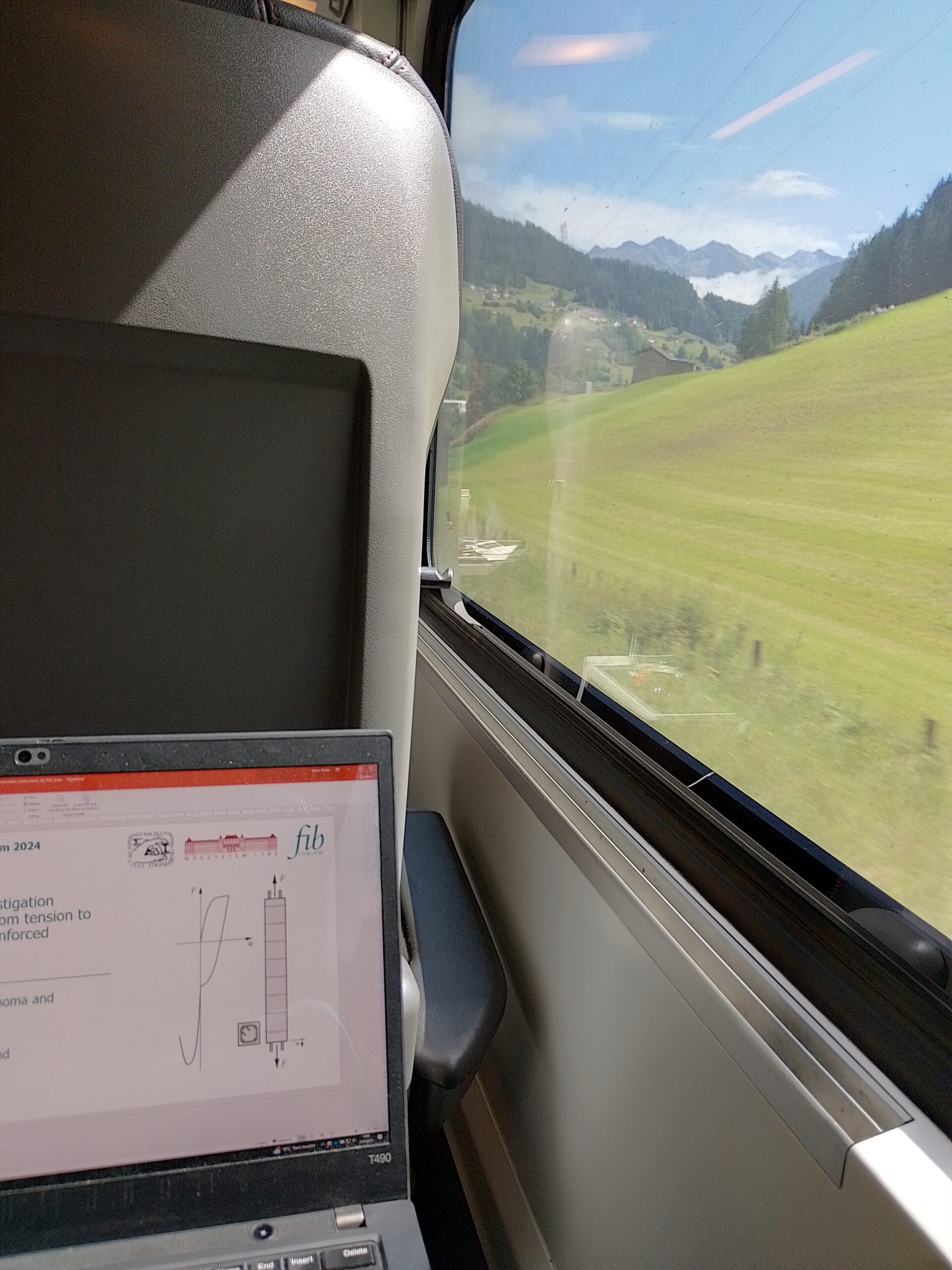
Simon Karrer